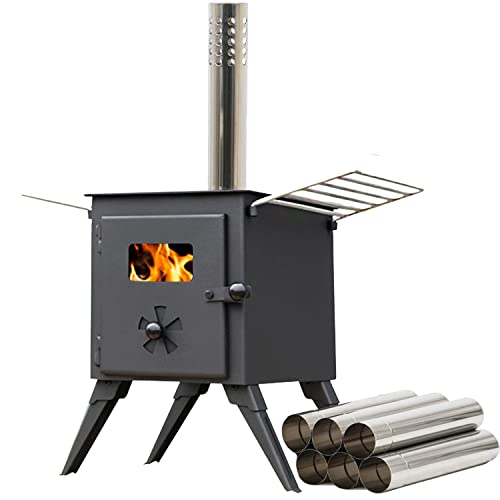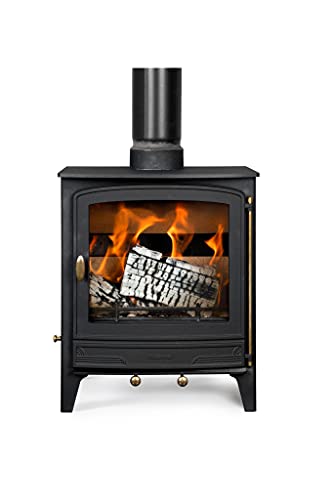Why Woodburning Stove Might Be Your Next Big Obsession
페이지 정보
작성자 Nola 작성일 25-02-19 08:57 조회 5 댓글 0본문
 How to Properly Operate a Woodburning Stove
How to Properly Operate a Woodburning Stovewood burning stoves for sale near me stoves are an excellent option to heat your home. They're also cheap. However, the smoke they produce can also be harmful to health. It is crucial to know how these appliances work and to use them correctly.
A lot of modern stoves rely on secondary combustion or catalytic to control their emissions. But older open fires and stoves create high levels of particulates.
The firebox
The firebox is the heart of any fireplace system. It's where you create a fire to heat your home and provide ambiance. It's a simple concept, but there are many important details that must be accounted for to keep your wood burning stove safe and efficient.
The most straightforward way to think about the firebox is to think of it as a box-like combustion chamber with walls and an entrance. Most fireplaces have either a prefabricated metal or masonry firebox. The type of box you choose will depend on your preferences as well as the kind of fireplace you have.
The majority of wood-burning stoves utilize the constant flow of air to generate the fire and burn the fuel. Fresh air is drawn into the stove through adjustable dampers located inside the stove's doors. This lets the Multi Fuel Wood Burning Stoves (Promarket.In.Ua) burn efficiently and helps reduce the toxic gases caused by unburnt or incomplete combustion. The exhaust gases will then be drawn up the chimney, and then safely away from your home.
Modern stoves with catalytic second combustion employ a special catalyst to reburn the unburnt gasses to produce additional heat. This produces a cleaner and less polluting emission than traditional wood stoves that have no secondary combustion. Modern non-catalytic stoves are also available, but they're usually less efficient than stoves that have secondary combustion that is catalytic.
Some wood-burning stoves have backboilers that can be used to heat water as well as for space heating. These stoves are referred to as "hybrids" or "combination". They are in use since the beginning of the 20th century.
Wood burning stoves should only be used with seasoned wood. Freshly cut (green) wood has a high moisture content and multi fuel wood burning stoves can result in low flue temperatures as well as excessive creosote buildup in the chimney. This could lead to chimney fires that damage the stove, and can even be dangerous to your family's health.
If you're looking for a professional who can inspect your wood-burning stove or perform repairs to your firebox, Multi Fuel Wood Burning Stoves be sure the chimney expert you hire has CSIA certification and also has reviews from customers on their website. It is also essential to inquire about their rates and what kind of work they perform.
The pipe that allows for ventilation
Ventilation is a must for wood stoves to remove smoke and keep the home safe and warm. Venting carries away carbon monoxide, nitrogen dioxide and excess moisture from the combustion process. It also helps to reduce the amount of air pollution and heat loss to the outdoors. Wood, gas and pellet stoves have different requirements for venting. Properly maintaining the stove's venting system on a regular basis is crucial to ensure safety and efficiency.
The ventilation system consists of the firebox, the ventilation pipe, and the chimney. The chimney and the vent pipe are used in conjunction to create draft, bringing smoke from the stove through the fireplace to outside air. The differences in temperature and densities between the hot wood smoke and the cold outside air creates draft. The more hot the temperature, the more smoke rises through the ventilation pipe and chimney.
Most modern wood stoves are EPA-certified as low-emission units. This means they emit less pollutants than older models, which contribute to global warming and other environmental issues. The majority of modern stoves come with pollution controls built-in to limit the amount they emit while ensuring that the emissions are disposed of efficiently.
Older stoves that have open flues create a lot more carbon dioxide, which is a poisonous gas that must not be allowed to escape into the home. Carbon monoxide can be produced when your chimney is dirty or has inadequate ventilation. Installing carbon monoxide alarms in your home is therefore crucial.
The distance you measure is between the chimney's opening in the wall or ceiling and the place where the wood bruner stove is on the floor. Multiply this number by two to determine the minimum length of stovepipe you need. You can use single-wall or double-wall stovepipe and must account for proper clearances from combustibles for either type.
The stove's air vent must be adjusted when it first gets lit until a proper flame is created within the stove and its combustion process has been stabilized. It is advised to avoid using wood based logs in the stove because they could contain volatile chemicals that can cause the air vents to malfunction.
The chimney
The chimney is a complex system which requires attention and care. From top to bottom, the chimney is comprised of several important components that are crucial to ensuring that your stove functions safely and efficiently.
The wood-burning stove's combustion gasses are vented outwards through the firebox, the ventilation pipe, and the chimney. This is crucial in preventing harmful emissions and reducing carbon dioxide levels within your home. To accomplish this, the chimney and flue have to be sufficiently hot to allow the gases out of the fireplace without cooling. This is accomplished by using a woodburning stove that has high heat output and by regularly adding new logs to the fire.
Most modern woodburning stoves are designed to operate with a chimney that is taller than older models in order to get a better drafting effect. However, this can have disadvantages when the height of your chimney is higher than the maximum permitted for your location. If this occurs the chimney could be competing with the house stack for draft, causing the gases to cool before exiting. This could impede the flow of gases and create creosote buildup which could pose a fire risk.
The most frequent mistake that homeowners make is to open the fireplace door and close it frequently. This can negatively affect the combustion. It is crucial to keep the fireplace door as closed as possible, and only open it when you need to add ash or firewood. The door should not be opened for too long. This allows the hot air from the stove to escape, making the logs cooler and harder to light.
Other types of combustibles can create higher emissions, or even an explosion in a chimney. Woodburning stoves were developed and optimized to burn firewood. They are not suitable for other combustibles.
The flu
To ensure that the airflow is proper, a woodburning stove needs flues that are the right size. The flue must be at least 25 percent larger than the stove pipe that connects the chimney and the stove to allow sufficient smoke circulation. In addition, a small wood burning stoves for shed stove must be placed on an open hearth made of non-combustible materials and is clear and unobstructed area that is in the front of the opening for the fireplace.
Modern stoves are equipped with a catalytic combustion system which reduces the amount of harmful byproducts that are released into the chimney. This feature can also help to improve the efficiency of wood stoves by burning a fire that produces more heat and less polluting. However, using other types of combustibles, such as coal, can lead to issues, including lower efficiency and greater emissions.
When burning wood in a stove or fireplace it is crucial to use dried or seasoned wood. If your wood isn't well-seasoned or dried, it could release a large amount of water vapor into the chimney. This can result in low flue temperatures and even a fire in the chimney.
A professional can also help you avoid the possibility of a chimney fire by regularly checking and cleaning the flue system. This includes the chimney, stovepipe and chimney itself to ensure all are in good shape.
A dirty flue and stove can result in an unclean chimney draft that could result in carbon monoxide being released into your home. This can be dangerous for your family members and you should never allow it to occur.
 A good rule of thumb is to hire an experienced chimney sweep sweep your stove and chimney once per year. This will help keep your chimney and stove working efficiently.
A good rule of thumb is to hire an experienced chimney sweep sweep your stove and chimney once per year. This will help keep your chimney and stove working efficiently.댓글목록 0
등록된 댓글이 없습니다.
